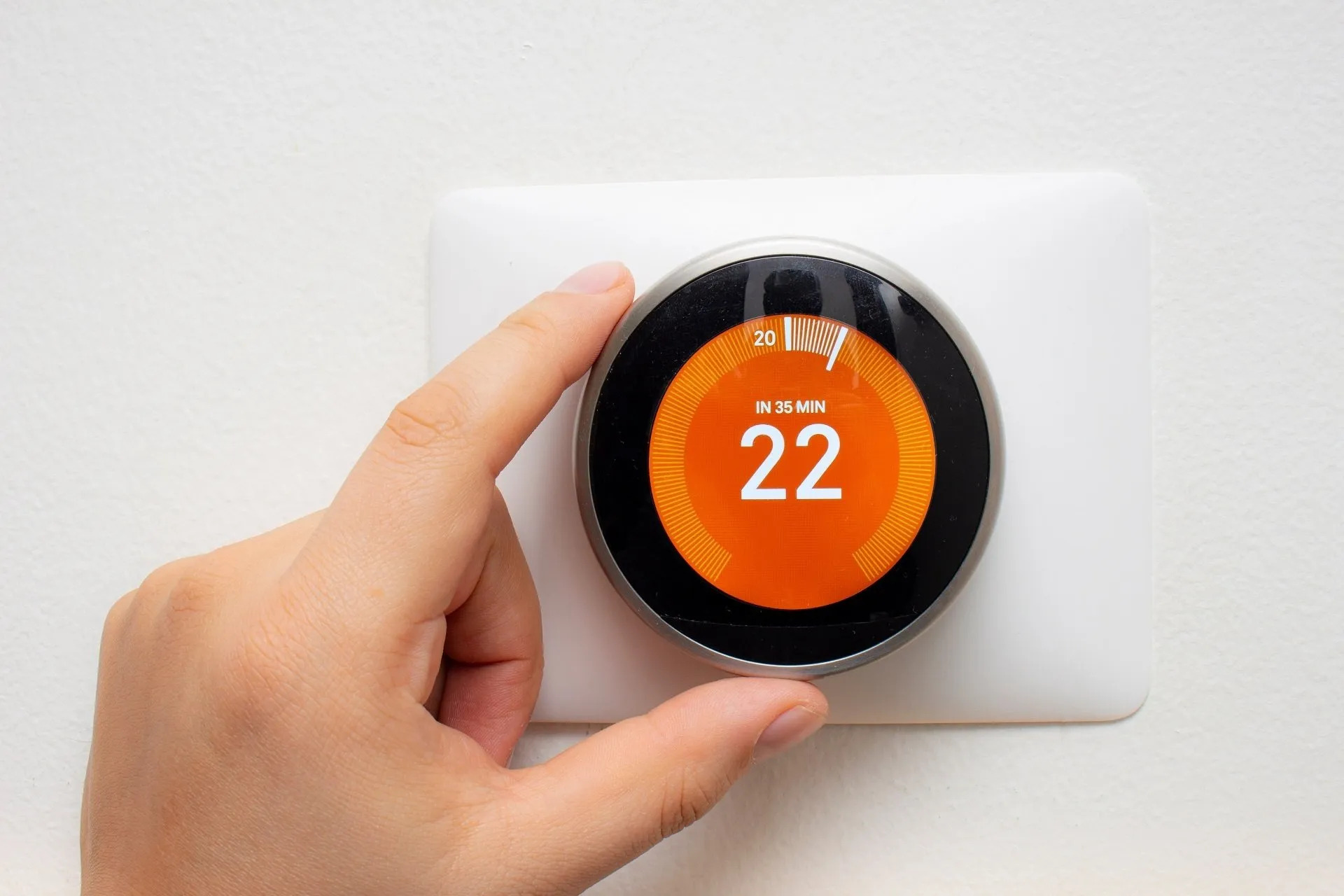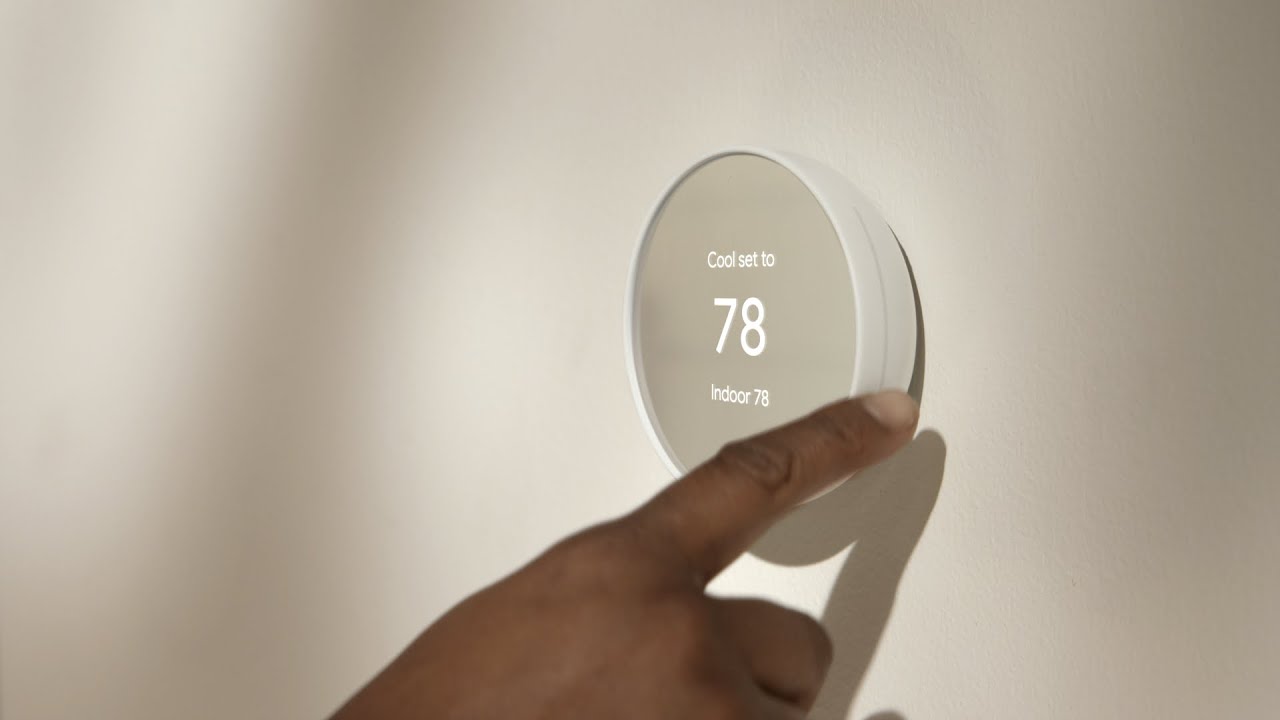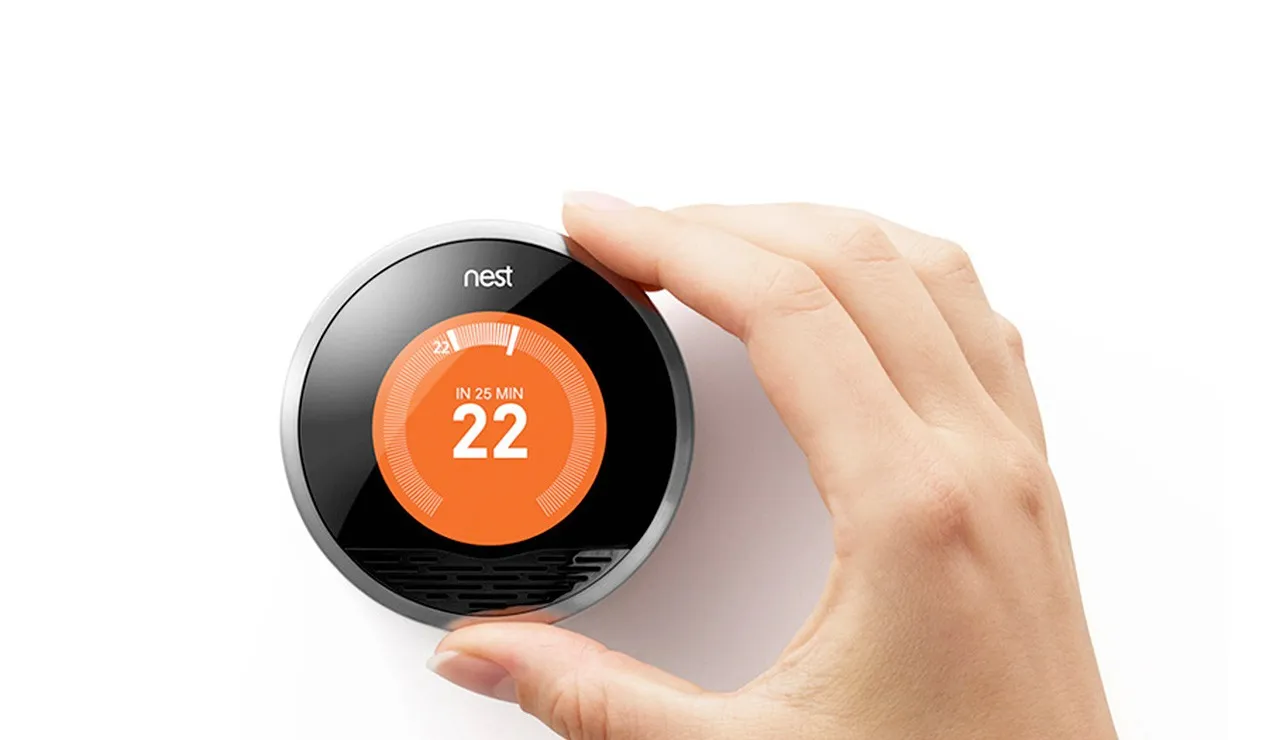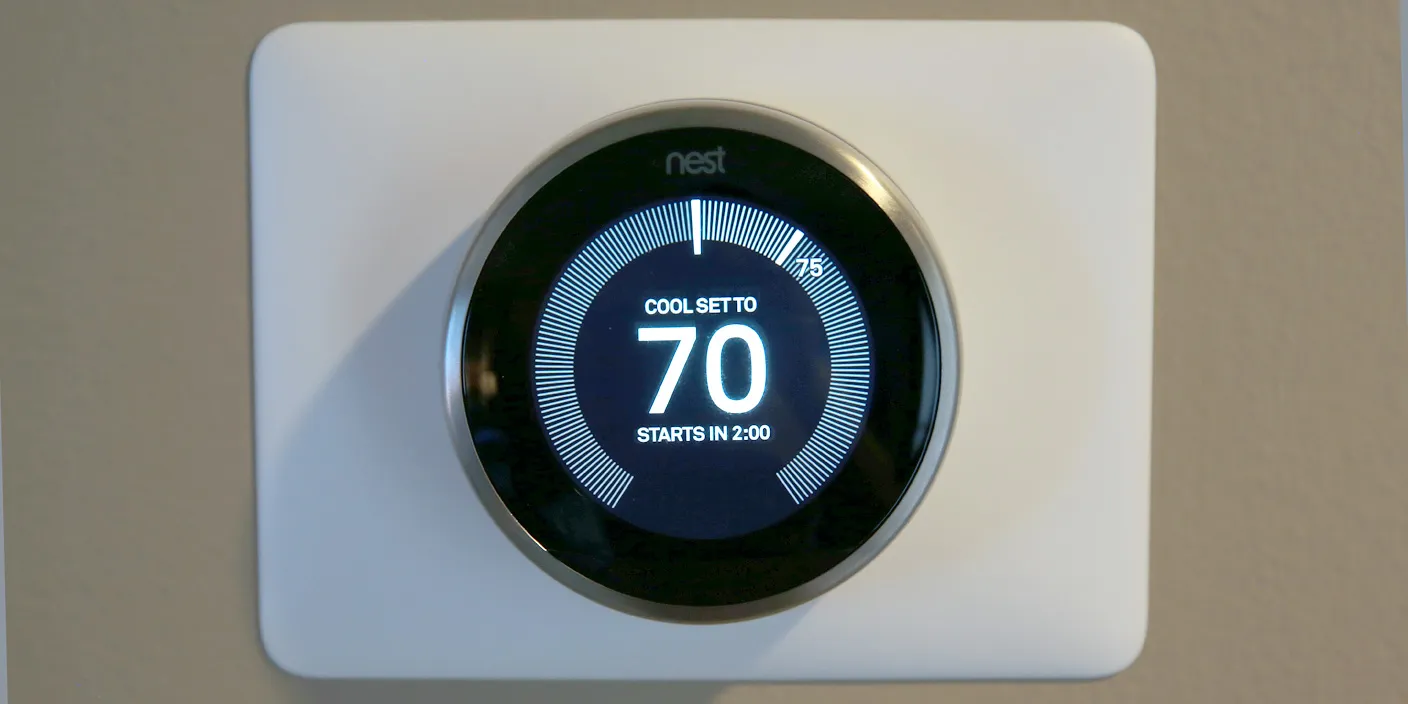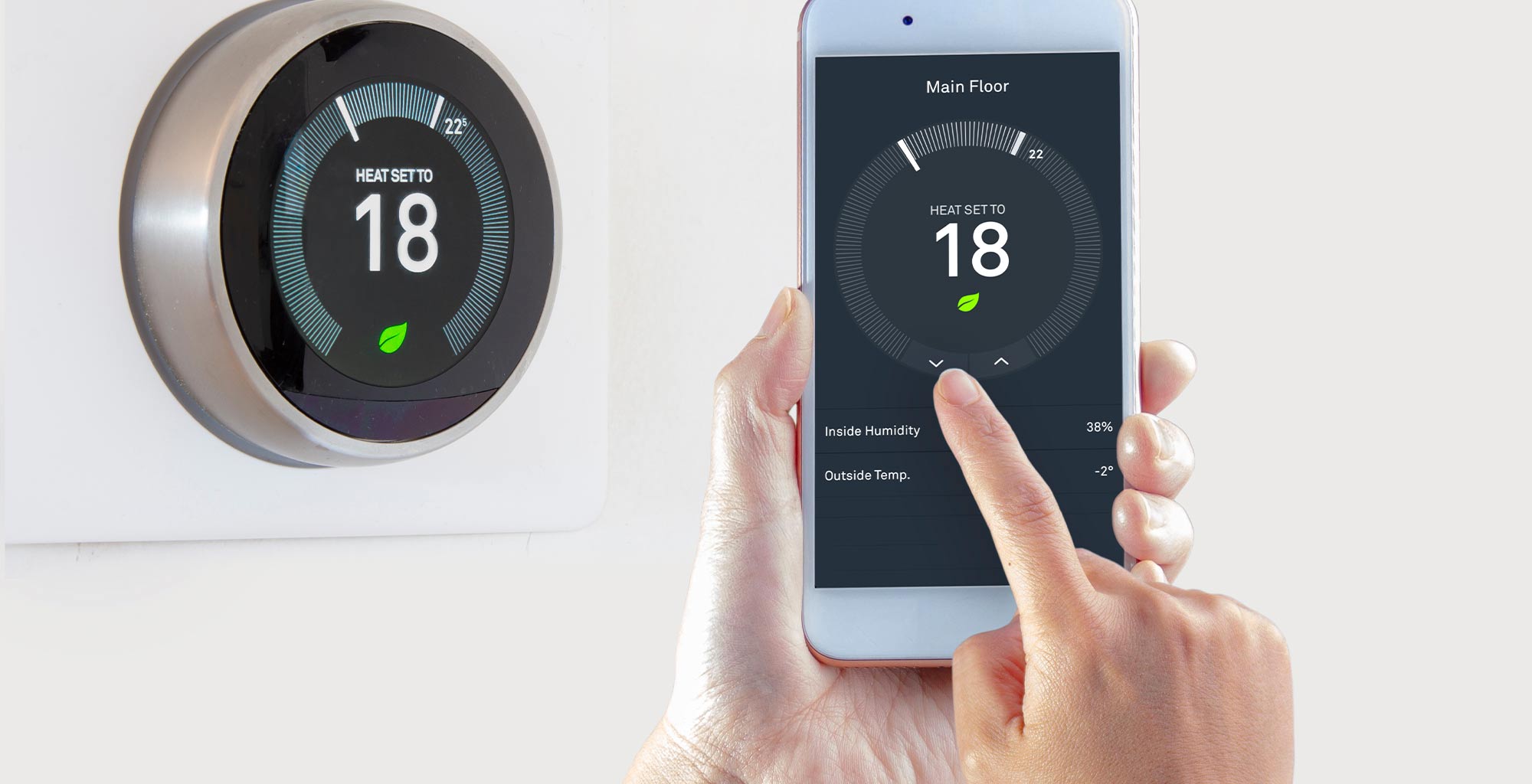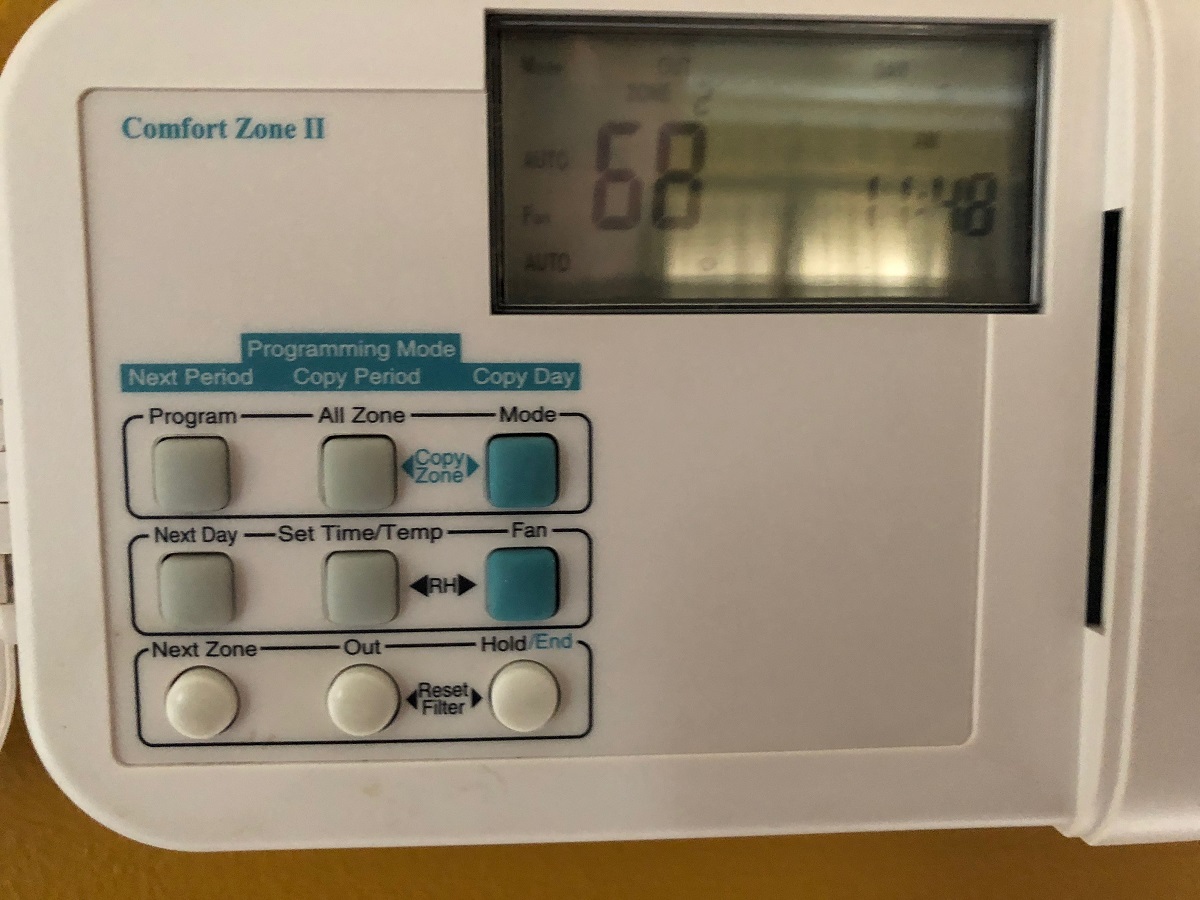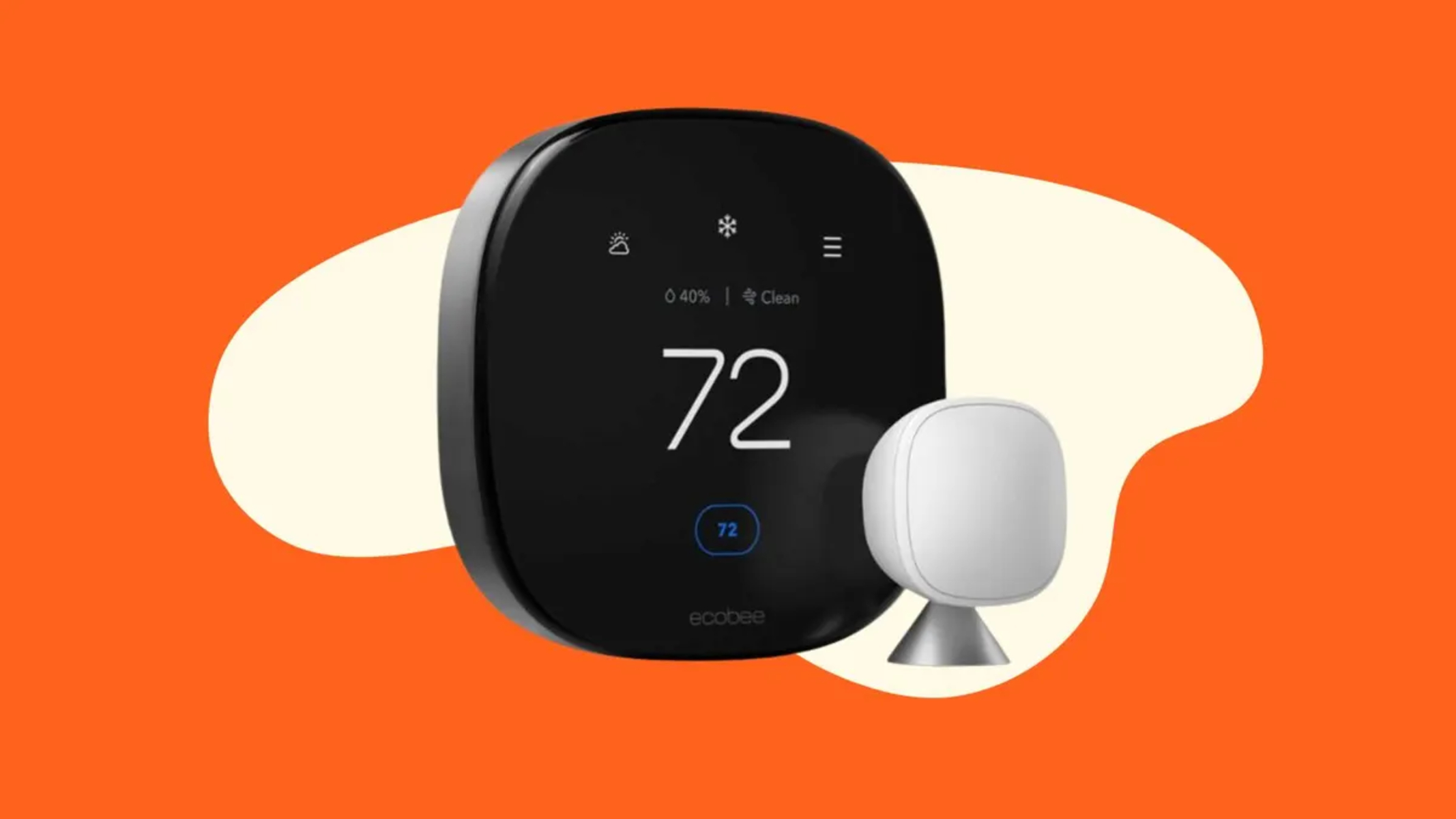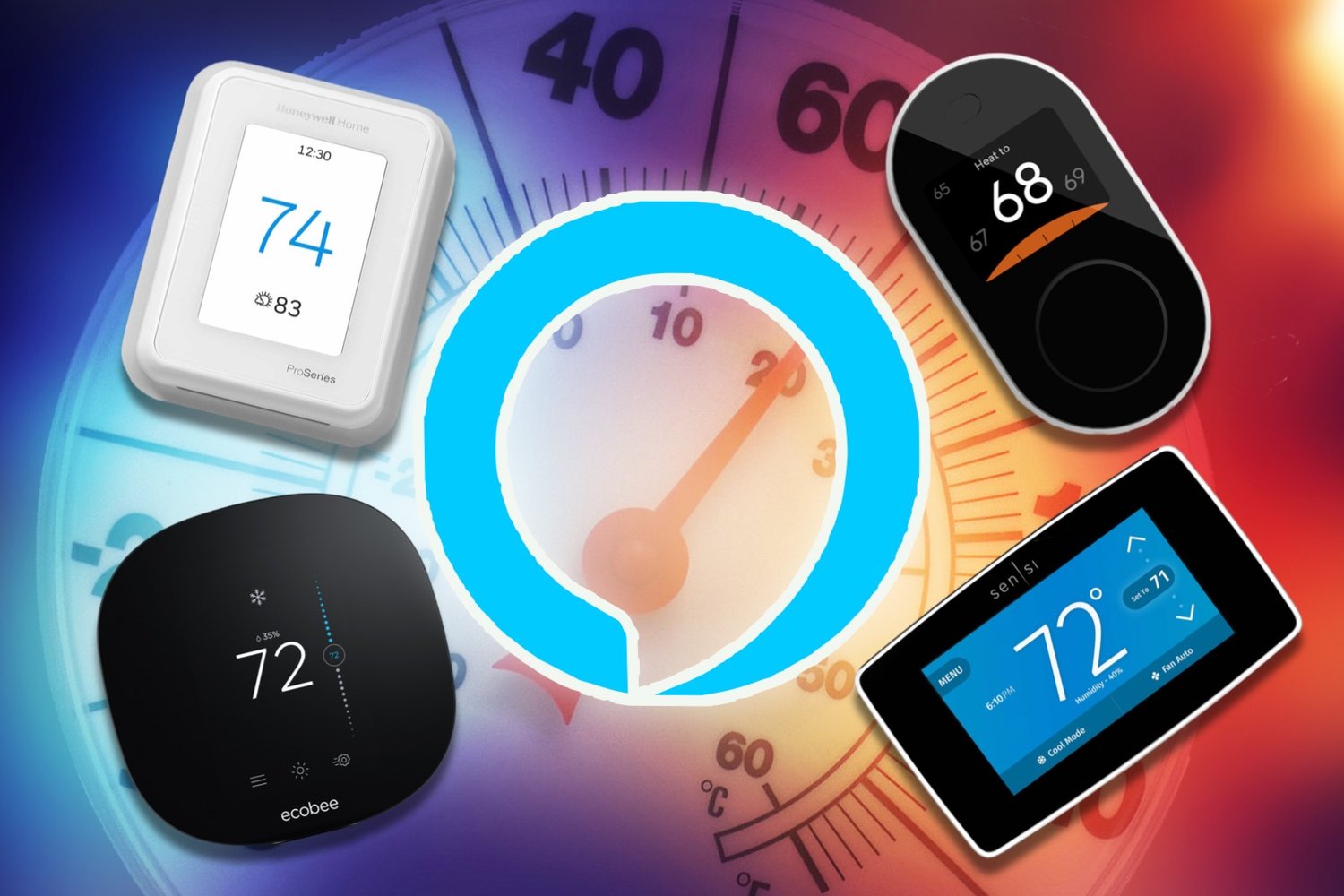Introduction
Welcome to the world of Nest thermostats! If you’re tired of manually adjusting your thermostat and want a smart, intuitive solution to control the temperature in your home, then a Nest thermostat might be just what you need. In this article, we will explore the benefits of using a Nest thermostat, walk you through the installation process, and provide insights into how to optimize your energy usage.
Nest thermostats are not like your traditional thermostats. They are equipped with smart technology that learns your preferences and adjusts accordingly to create the perfect indoor climate. Whether you’re at home or away, Nest thermostats ensure optimal comfort and energy efficiency.
With their sleek and modern design, Nest thermostats are not only functional, but also add a touch of elegance to your home decor. They are designed with simplicity in mind, making them user-friendly and easy to operate.
Throughout this article, we will guide you through the installation process, explain how to set up your Nest thermostat, and provide an overview of the various features and functionalities it offers. We will also delve into tips and tricks to save energy and troubleshoot common issues that may arise.
So, if you’re ready to experience the convenience and efficiency of a Nest thermostat, let’s dive in and take a closer look at how you can make the most of this innovative device!
What is a Nest Thermostat?
A Nest thermostat is a smart device that helps you conveniently control the temperature of your home and save energy. Developed by Nest Labs, a subsidiary of Google, Nest thermostats utilize cutting-edge technology to learn your preferences and automatically adjust the temperature settings to create a comfortable environment.
One of the standout features of Nest thermostats is their ability to “learn” your habits and schedule. This means that over time, the thermostat will analyze your temperature adjustments and create a personalized schedule that aligns with your lifestyle. For example, if you tend to turn up the heat in the evening, the Nest thermostat will make note of this and adjust the temperature accordingly.
Furthermore, Nest thermostats have a built-in motion sensor that detects when you’re away from home. As soon as you leave, the thermostat will switch to an energy-saving mode, known as Eco Temperature, to conserve energy and reduce your utility bills. When you return, it will quickly resume your preferred temperature settings.
Another remarkable feature of Nest thermostats is their compatibility with various smart home devices and platforms. You can connect your Nest thermostat to other smart devices like Amazon Alexa or Google Assistant for voice-controlled temperature adjustments. Additionally, Nest thermostats integrate with home automation platforms, allowing you to create customized routines and scenarios for a truly smart home experience.
Installation of a Nest thermostat is straightforward and can be done by following the provided instructions or seeking professional help if needed. Once installed, you can easily control and monitor your thermostat from anywhere using the accompanying smartphone app or through a web browser.
Overall, a Nest thermostat offers convenience, energy savings, and customization options. With its advanced features and intuitive interface, it transforms your home heating and cooling experience, providing both comfort and efficiency.
Why Should You Use a Nest Thermostat?
There are several compelling reasons to consider using a Nest thermostat in your home. Let’s explore some of the key benefits that make these devices a popular choice among homeowners:
Energy Savings: Nest thermostats are designed to help you save energy and reduce your utility bills. By learning your habits and preferences, they automatically adjust the temperature to avoid unnecessary heating or cooling when you’re away. This proactive approach can result in significant energy savings over time.
Convenience and Accessibility: With a Nest thermostat, you have full control of your home’s temperature at your fingertips. Whether you’re sitting on the couch or miles away from home, you can easily adjust the temperature using the Nest app on your smartphone or through a web browser. This level of accessibility and convenience ensures that your home is always at the perfect temperature when you need it.
Smart Learning: Nest thermostats employ advanced machine learning algorithms to understand your preferences and create a personalized schedule. Over time, the thermostat will adapt to your routines and optimize energy usage for maximum comfort. The more you use it, the smarter it becomes.
Compatibility with Smart Home Systems: Nest thermostats seamlessly integrate with various smart home systems and devices, allowing you to create a cohesive and connected smart home ecosystem. Whether it’s syncing with voice assistants like Amazon Alexa or Google Assistant, or integrating with home automation platforms, you can effortlessly control your Nest thermostat alongside other smart devices for a truly interconnected experience.
Remote Access and Monitoring: One of the standout features of Nest thermostats is their ability to be controlled remotely. Whether you’re away on vacation or simply on your way home from work, you can use the Nest app to adjust your thermostat to your preferred temperature. This remote access also allows you to monitor energy usage and receive valuable insights that can help you optimize your energy consumption.
Elegant Design: Nest thermostats are not only technologically advanced but also visually appealing. They feature a sleek and modern design that can seamlessly complement any home decor. The intuitive interface and touch controls make it easy to operate and adjust settings without any hassle.
With their energy-saving capabilities, convenience, and compatibility with smart home systems, Nest thermostats provide an unmatched level of comfort and efficiency for your home. Investing in a Nest thermostat can not only enhance your everyday living experience but also contribute to a greener and more sustainable future.
Installing Your Nest Thermostat
Installing a Nest thermostat is a relatively simple process that can be done by following a few easy steps. Before you begin, here’s what you’ll need:
- A Nest thermostat
- A screwdriver
- A power drill (if necessary)
- A level
- A smartphone or computer
- A Wi-Fi connection
Here are the general steps to install your Nest thermostat:
- Turn off the power: Before attempting any installation, it’s crucial to turn off the power to your HVAC system from the circuit breaker to ensure safety.
- Remove the old thermostat: Carefully detach the old thermostat from the wall by unscrewing it and disconnecting the wires. Take note of the labels or take a picture for reference.
- Attach the Nest base: Using the screws provided, attach the Nest base to the wall at the desired location. Ensure it is level and firmly in place.
- Connect the wires: Match the labeled wires from your HVAC system with the corresponding terminals on the Nest base. Gently insert each wire into the appropriate terminal, making sure they are secure.
- Attach the Nest display: Carefully align the connectors on the Nest display with those on the base and press it firmly into place until it clicks.
- Turn on the power: Restore power to your HVAC system by turning the circuit breaker back on.
- Follow the on-screen instructions: The Nest thermostat will guide you through the setup process on its display, asking for your Wi-Fi information and other configuration details.
- Connect to Wi-Fi: Use the Nest app on your smartphone or computer to connect your thermostat to your Wi-Fi network. This step is necessary for remote control and monitoring.
- Test and adjust: Once installed, test your Nest thermostat by adjusting the temperature settings. Ensure that your HVAC system responds accordingly and that the thermostat functions as intended.
If you’re unsure about any step during the installation process, it’s recommended to consult the detailed installation guide provided by Nest or seek professional assistance.
Remember, improper installation can lead to malfunctions or damage to your HVAC system. So, take your time, follow the instructions carefully, and enjoy the benefits of your newly installed Nest thermostat.
Setting Up Your Nest Thermostat
Once you have successfully installed your Nest thermostat, it’s time to set it up and customize the settings according to your preferences. Here’s a step-by-step guide on how to get started:
- Power on your Nest thermostat: After installation, the Nest display will turn on automatically. Follow the on-screen instructions to choose your language and connect it to your Wi-Fi network.
- Configure your preferences: Use the Nest app on your smartphone or computer to access the thermostat’s settings. From here, you can set your desired temperature scale (Fahrenheit or Celsius), time format, and other personalized preferences.
- Create a schedule: While Nest thermostats have the ability to learn your habits over time, you can also manually create a schedule that aligns with your routine. This ensures that your home is always at the right temperature when you need it.
- Enable auto-schedule: If you prefer to have your Nest thermostat learn your schedule automatically, you can enable the auto-schedule feature. This means that the thermostat will adapt and adjust the temperature based on your daily patterns, saving you both time and energy.
- Set temperature preferences: Fine-tune the temperature settings to suit your comfort level. The Nest thermostat allows you to specify your desired temperature range for heating and cooling, as well as setting a target temperature for specific times of the day.
- Explore additional features: Take some time to explore the additional features offered by your Nest thermostat. This may include features such as humidity control, fan control, and energy-saving modes. Familiarize yourself with these options to make the most out of your device.
- Connect to smart home systems: If you have other smart home devices or systems in your home, such as voice assistants or home automation platforms, you can integrate them with your Nest thermostat. Follow the instructions provided by Nest to connect and control your thermostat through these platforms.
- Regularly review and adjust settings: Over time, you might want to make changes to your schedule or temperature preferences. Regularly review and adjust your settings to ensure that they still meet your needs and provide optimal comfort and energy efficiency.
By following these steps, you can personalize your Nest thermostat to fit your lifestyle and preferences. Enjoy the convenience of having a smart thermostat that adapts to your needs and creates a comfortable environment in your home.
Understanding the Nest Thermostat Interface
The Nest thermostat interface is designed to be user-friendly and intuitive, providing easy access to all the essential information and controls you need. Here’s a breakdown of the different elements and features you’ll find on the Nest thermostat:
1. Display: The display of the Nest thermostat is a vibrant, high-resolution screen that shows relevant information such as current temperature, target temperature, and system status. It also displays icons and prompts for various functions.
2. Temperature Controls: The main function of the thermostat is to control the temperature. You can adjust the temperature manually by spinning the outer ring of the thermostat clockwise or counterclockwise. This allows you to easily increase or decrease the target temperature according to your comfort level.
3. Mode Selection: The Nest thermostat offers different operating modes to fit your specific needs. You can switch between heating, cooling, and off modes using the mode selection button located on the thermostat. This allows you to customize your comfort settings based on the weather or your preferences.
4. Energy Usage: The Nest thermostat provides insights into your energy consumption to help you understand and manage your usage. It displays detailed energy reports and usage history, allowing you to track and optimize your energy efficiency.
5. Farsight: Farsight is a feature that shows you the temperature, weather, or time in a larger, easy-to-read font when the thermostat detects your presence from a distance. This allows you to quickly check the temperature from across the room without needing to approach the thermostat.
6. Sensor Detection: The Nest thermostat is equipped with built-in sensors that detect activity and adjust settings accordingly. It can detect when you’re home or away, enabling it to switch between heating and cooling modes or enter energy-saving mode automatically.
7. Weather Updates: The Nest thermostat can connect to the internet and provide weather updates directly on its display. This feature allows you to stay informed about the outside temperature and weather conditions without needing to check your phone or a separate device.
8. App Integration: The Nest thermostat seamlessly integrates with the Nest app, which can be installed on your smartphone or accessed through a web browser. The app provides remote control and monitoring of your thermostat, allowing you to adjust settings, create schedules, and view energy usage data from anywhere.
It’s important to familiarize yourself with the Nest thermostat interface to take full advantage of its features and functionalities. By understanding how to navigate and utilize the different elements of the interface, you can easily customize your temperature settings, access energy usage information, and enjoy a comfortable and efficient home environment.
Adjusting Temperature and Scheduling
One of the great features of a Nest thermostat is the ability to easily adjust the temperature and create customized schedules to suit your preferences and lifestyle. Here’s a closer look at how you can make the most of these functionalities:
Manual Temperature Adjustments: With a Nest thermostat, you have the flexibility to manually adjust the temperature at any time. Simply turn the outer ring of the thermostat to the left to decrease the temperature or to the right to increase it. The thermostat will respond quickly, updating the target temperature to provide you with immediate comfort.
Creating a Customized Schedule: The Nest thermostat allows you to create a personalized schedule that aligns with your routine. By setting specific temperature preferences for different times of the day, you can ensure that your home is always at the desired temperature. For example, you can set a higher temperature in the morning when you wake up and a lower temperature when you’re usually away at work or asleep at night.
Learning Schedule and Adaptive Features: Nest thermostats have the ability to learn your schedule and adapt to your habits over time. This means that they can automatically adjust the temperature based on your preferences and daily patterns. If you consistently adjust the temperature in a certain way, the thermostat will learn from this and incorporate it into its schedule. The more you use your Nest thermostat, the more accurate and tailored its schedule becomes.
Manual Mode Override: If you find yourself deviating from your regular schedule or if you want to quickly adjust the temperature outside of the scheduled settings, you can manually override the schedule. This allows you to temporarily change the temperature without affecting the existing schedule. The Nest thermostat will resume following the programmed schedule at the next scheduled time slot.
Away and Eco Temperature: Nest thermostats are equipped with a built-in motion sensor that detects when you’re away from home. When the thermostat detects no movement, it automatically switches to an energy-saving mode called Eco Temperature. This helps to conserve energy and reduce utility bills. When you return home, the thermostat will quickly adjust the temperature back to your preferred settings.
Remote Adjustment: With the Nest app on your smartphone or through a web browser, you can adjust the temperature of your Nest thermostat from anywhere. Whether you’re on vacation or running errands, you have complete control to ensure your home is comfortable when you arrive. Remote adjustment also allows you to make changes to the schedule if needed.
By adjusting the temperature and creating a customized schedule, you can optimize the comfort level in your home while maximizing energy efficiency. The adaptive features and remote control capabilities of a Nest thermostat provide flexibility and convenience, ensuring that your home is always at the perfect temperature whenever you need it.
Using the Nest Thermostat App
The Nest thermostat app is a powerful tool that allows you to control and monitor your thermostat from the convenience of your smartphone or computer. Here’s a closer look at how you can make the most of the app:
Remote Control: The Nest app gives you the ability to control your thermostat from anywhere in the world. Whether you’re at work, on vacation, or simply in another room, you can easily adjust the temperature settings with a few taps on your phone. This feature ensures that your home is always at the desired temperature when you arrive.
Schedule Management: The app provides seamless access to your thermostat’s scheduling capabilities. You can create and modify schedules according to your preferences and daily routines. With just a few taps, you can set specific temperature settings for different times of the day and days of the week. This flexibility allows you to customize your comfort based on your lifestyle.
Energy Usage Tracking: The Nest app provides valuable insights into your energy usage. You can view reports and graphs that show how much energy you’ve consumed over time. This information helps you understand your consumption patterns and identify opportunities for energy efficiency improvements. By monitoring your energy usage, you can make informed decisions to reduce your environmental impact and lower your utility bills.
Home/Away Assist: The Nest app includes a Home/Away Assist feature that helps you optimize energy usage based on your presence. When your phone detects that you’ve left home, it can signal the thermostat to switch to an energy-saving mode. When you return, the app can notify the thermostat to adjust the temperature back to your preferred settings. This convenience ensures that you’re not wasting energy when you’re not at home.
Integration with Other Smart Devices: The Nest app seamlessly integrates with other smart devices and platforms. You can connect your Nest thermostat with voice assistants like Amazon Alexa or Google Assistant, enabling you to control your home’s temperature using voice commands. It also integrates with home automation platforms, allowing you to create customized routines and scenarios that involve your thermostat along with other smart devices in your home.
Software Updates and Notifications: The app keeps your Nest thermostat up to date with the latest software enhancements and performance improvements. You’ll receive notifications about new features, important updates, and any potential issues with your system. This ensures that your thermostat operates at its best and benefits from the latest advancements.
The Nest app is designed to give you full control and convenience when it comes to managing your Nest thermostat. With its intuitive interface and comprehensive features, you can easily adjust temperature settings, manage schedules, track energy usage, and integrate with other smart devices. It puts the power of controlling your home’s climate in the palm of your hand.
Saving Energy with Nest Thermostats
Nest thermostats are not just convenient and intuitive; they are also designed to help you save energy and reduce your environmental impact. Here are some tips and features that can help you maximize energy efficiency with your Nest thermostat:
1. Learning Capability: Nest thermostats have the ability to learn your habits and preferences over time. As you adjust the temperature and create a schedule, the thermostat adapts and optimizes energy usage to suit your lifestyle. The more you use it, the better it becomes at anticipating your heating and cooling needs, leading to energy savings.
2. Eco Temperature: When everyone is away, Nest thermostats automatically switch to an energy-saving mode known as Eco Temperature. This helps reduce unnecessary heating or cooling when no one is home, saving energy and lowering your utility bills. When you return, the thermostat quickly resumes your preferred temperature settings.
3. Seasonal Adjustments: Nest thermostats can also automatically adjust their settings based on seasonal temperature fluctuations. By analyzing historical data and weather patterns, the thermostat can make proactive adjustments to optimize energy efficiency. You can trust that your thermostat is making the necessary adjustments to keep your home comfortable while saving energy.
4. Energy Usage Reports: Nest thermostats provide detailed energy usage reports through the app or web interface. These reports give you insights into your heating and cooling patterns, allowing you to identify opportunities for energy savings. By understanding when and how you use energy, you can make informed decisions about adjusting your temperature settings and optimizing your habits.
5. Temperature Setbacks: Take advantage of temperature setbacks by adjusting the temperature when you’re asleep or away from home. By lowering the temperature during these times, you can conserve energy without sacrificing comfort. With a Nest thermostat and its scheduling capabilities, you can easily set temperature setbacks to align with your daily routine.
6. Occupancy Sensors: Nest thermostats are equipped with occupancy sensors that detect movement in your home. By utilizing these sensors, the thermostat can determine if someone is present and adjust temperature settings accordingly. This helps avoid unnecessary heating or cooling when no one is at home, saving energy in the process.
7. Integration with Smart Home Systems: Integrating your Nest thermostat with other smart devices and platforms can enhance energy efficiency. For example, you can connect it with smart window shades that can automatically adjust to block or allow heat from the sun, minimizing the load on your HVAC system.
8. Remote Monitoring and Control: The ability to monitor and control your Nest thermostat remotely through the app is a valuable energy-saving tool. For instance, if you forgot to adjust the temperature when leaving home, you can easily do it from your smartphone, preventing wasted energy while you’re away.
By leveraging the learning capabilities, eco temperature mode, energy usage reports, and other features of a Nest thermostat, you can make significant strides in saving energy and reducing your carbon footprint. Not only will you contribute to a greener environment, but you’ll also enjoy the long-term cost savings on your energy bills.
Troubleshooting Common Issues
While Nest thermostats are generally reliable and user-friendly, you may encounter some common issues from time to time. Here are some troubleshooting steps to help you resolve these issues:
1. Thermostat not turning on: If your Nest thermostat is not turning on, make sure it is properly connected to the base and that the base has power. Check the circuit breaker to ensure it is not tripped. If the issue persists, consult the Nest support resources or contact customer support for further assistance.
2. Connectivity issues: If your Nest thermostat is not connecting to Wi-Fi or is frequently losing its connection, check your Wi-Fi network to ensure it is functioning properly. Restart your router and ensure that the thermostat is within range. If the issue persists, try resetting the thermostat’s Wi-Fi settings and reconnecting it to your network.
3. Inaccurate temperature readings: If you find that the temperature readings on your Nest thermostat are inaccurate, check if the thermostat is installed in an area that is affected by direct sunlight, drafts, or heat sources. It is best to install it away from these factors to ensure accurate readings. If the issue persists, you can recalibrate the temperature sensor through the thermostat settings.
4. HVAC system not responding: If your HVAC system is not responding to temperature adjustments or fails to turn on, check the wiring connections at the thermostat and ensure they are secure. Also, verify that your HVAC system is powered on and functioning properly. If the problem continues, consult a professional HVAC technician to inspect and troubleshoot your system.
5. Schedule not functioning as expected: If your Nest thermostat schedule is not activating or following the expected settings, review the schedule configuration in the app or web interface. Ensure that the correct temperatures and timings are programmed. Double-check if the thermostat is set to the correct operating mode (heating/cooling/off). Make any necessary adjustments and restart the schedule if needed.
6. Battery issues: If you have a battery-powered Nest thermostat and are experiencing issues with battery life or charging, check if the battery contacts are clean and properly connected. Make sure you are using compatible batteries and replace them if necessary. If the issue persists, consult the Nest support resources for guidance.
7. Unresponsive touch display: If the touch display on your Nest thermostat is unresponsive, try cleaning the screen gently with a soft, lint-free cloth. If that doesn’t work, restart the thermostat by removing it from the base and reattaching it. If the issue persists, contact Nest customer support for further assistance.
8. Software updates: Keep your Nest thermostat up to date with the latest software updates. Regularly check for updates in the app or web interface and follow the instructions to install them. Software updates often bring bug fixes, performance improvements, and new features that can resolve common issues.
If you encounter any other issues or have troubleshooting questions specific to your Nest thermostat model, refer to the Nest support resources or reach out to their customer support. Their team can provide you with personalized assistance to troubleshoot and resolve any technical problems you may encounter.
Conclusion
Congratulations on familiarizing yourself with Nest thermostats and learning how to make the most of their incredible features and functionalities. These smart devices provide convenience, energy savings, and customization options to enhance comfort and efficiency in your home.
Throughout this article, we explored what Nest thermostats are and why they are a popular choice among homeowners. We discussed the easy installation process and the steps to set up and customize your thermostat to your preferences. We also highlighted the user-friendly interface and how you can adjust temperature settings and create schedules to suit your lifestyle.
We delved into the Nest thermostat app and its remote control capabilities, schedule management, energy usage tracking, and integration with other smart home systems. We also explored ways to save energy with Nest thermostats, such as their learning capabilities, eco temperature mode, and occupancy sensors.
Lastly, we covered common troubleshooting tips for issues you may encounter with your Nest thermostat. From connectivity issues to inaccurate temperature readings, we provided guidance on resolving these problems and seeking further assistance when needed.
By incorporating Nest thermostats into your home, you can enjoy a more comfortable living space while reducing energy consumption and environmental impact. These smart devices offer a seamless blend of technology, convenience, and sustainability, allowing you to take control of your home’s climate with ease.
Remember, as technology continues to advance, it’s always a good idea to stay up to date with software updates and take advantage of the latest features and improvements. Regularly check for updates in the Nest app or web interface to ensure that you’re benefiting from the most optimized experience.
We hope that this article has provided you with valuable insights and guidance on using and maximizing the benefits of Nest thermostats. Embrace the power of smart technology and enjoy the comfort and energy savings that Nest thermostats bring to your home.







